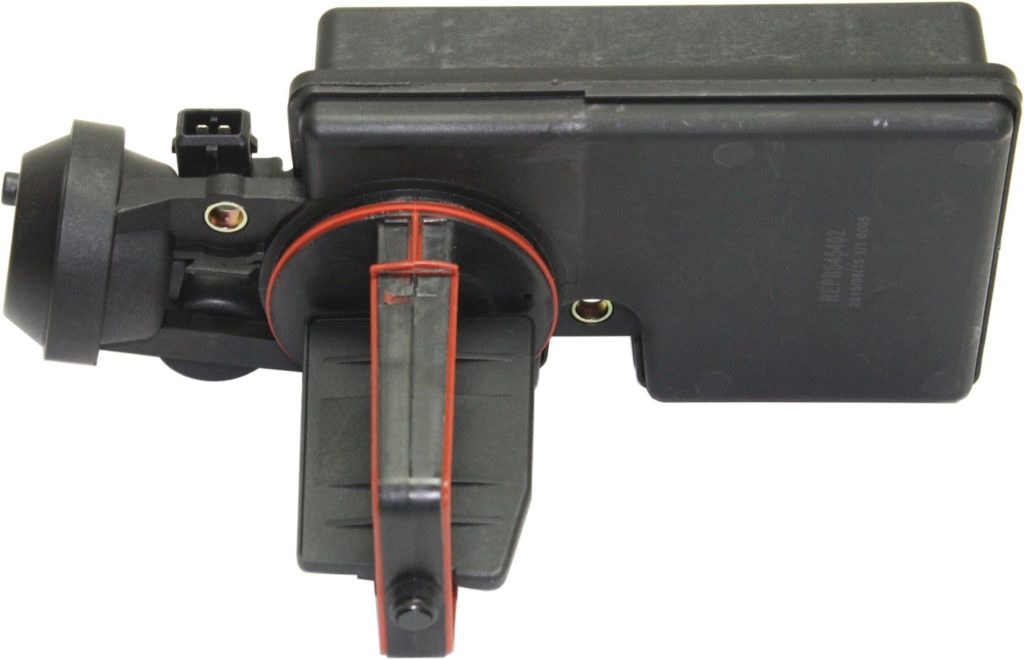One of the diagnostic trouble codes (DTCs) you might encounter is P2016. In this article, you’ll learn all about the P2016 code, its common symptoms, possible causes, and recommended fixes.
What Does the P2016 Code Mean?
Code P2016 stands for “Intake Manifold Runner Position Sensor/Switch Circuit Low Bank 1.” It’s a generic powertrain code that applies to many newer vehicles.
A P2016 code might mean that your powertrain control module (PCM) has detected a problem with Bank 1 of your engine’s cylinders. The value provided by the intake manifold runner control valve/position sensor (also known as the IMRC valve/sensor) might be incorrect, which can disrupt the flow of air in the engine. This problem might be caused by an electrical circuit fault or a mechanical failure within the IMRC system.

A deeper understanding of IMRC configurations can help you address P2016 if you plan to diagnose or fix the issue yourself.
Note: The definition of code P2016 may be different depending on the vehicle manufacturer. Consult the appropriate repair manual or repair database for the exact code definition.

What are the Common Causes of the P2016 Code?
A P2016 code doesn’t necessarily mean that your IMRC actuator/sensor has failed. In some cases, a P2016 code can be triggered by several failed parts. Make sure to check your system to get an accurate diagnosis. Here are some of the possible causes of the P2016 code:
- Malfunctioning IMRC actuator relay (if equipped)
- Bad IMRC actuator/sensor
- Faulty Powertrain Control Module

What are the Common Symptoms of the P2016 Code?
The P2016 code might be accompanied by other DTCs, so you might observe some symptoms not listed here. However, if your PCM is only storing this particular code, your vehicle might exhibit the following symptoms.
- Illuminated check engine light
- Reduced engine power
- Bad fuel economy
How to Diagnose the P2016 Code
There are multiple potential causes for your P2016 code, which can make your vehicle difficult to diagnose. If you’re planning to do some DIY repairs, we recommend watching the following video to learn the general diagnostic procedures involved in troubleshooting this code.
How to Fix the P2016 Code
A P2016 code might be stored for a variety of reasons. Therefore, there’s no cookie-cutter solution for troubleshooting this code. As mentioned earlier, you’ll have to consult your vehicle’s repair manual to find the recommended diagnostic and repair steps for your DTC. You can also check out technical service bulletins for known fixes to save time and money on troubleshooting.
If you have an OBD-II scanner and the required repair skills, you can probably resolve a P2016 code on your own. There are lots of credible OBD-II resources online, which have the information you need to repair your vehicle. Chilton repair manuals are certainly useful, but we recommend an ALLDATA subscription. ALLDATA offers single-vehicle subscriptions that include detailed factory repair information.
However, you can also opt to get your vehicle serviced by a certified mechanic. They can diagnose your vehicle and perform the appropriate repairs, so you don’t need to worry.
Any information provided on this Website is for informational purposes only and is not intended to replace consultation with a professional mechanic. The accuracy and timeliness of the information may change from the time of publication.


















